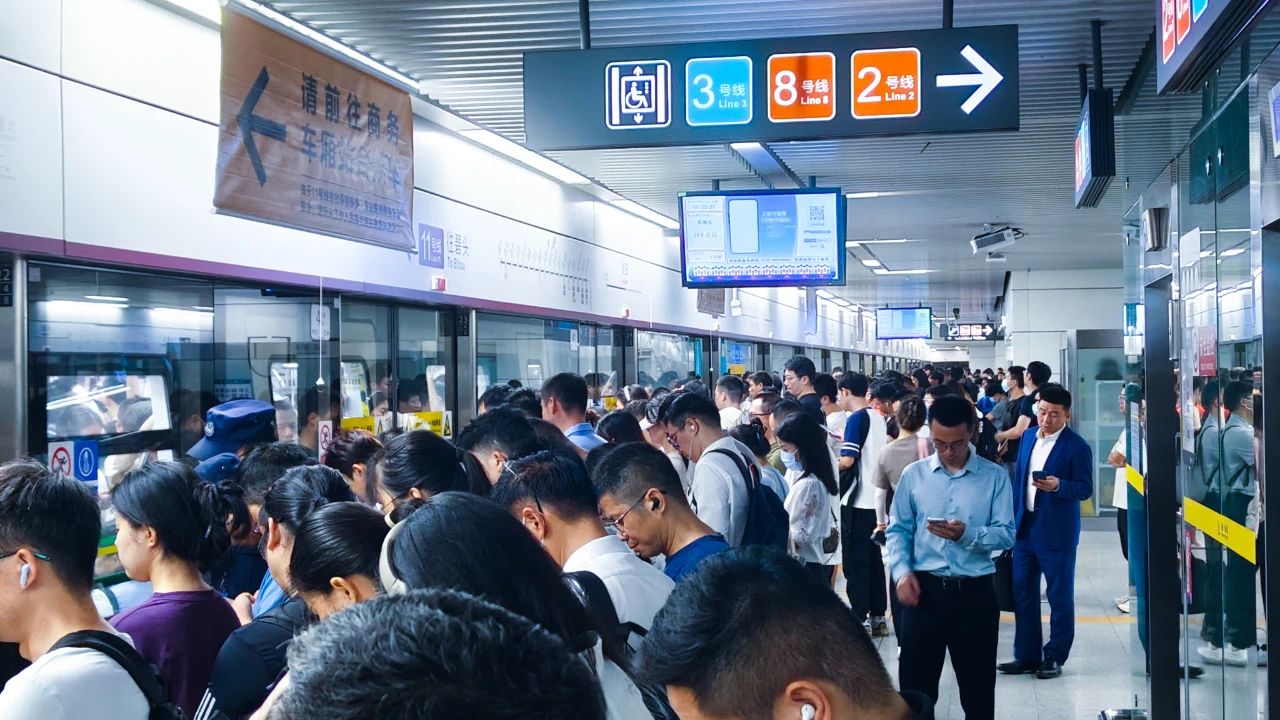81% commuters reach work in 45 minutes
Writer: Han Ximin | Editor: Lin Qiuying | From: Shenzhen Daily | Updated: 2024-10-29
With 81% of commuters in Shenzhen reaching work within 45 minutes, the city leads China’s seven megacities in terms of commuting convenience, according to the recently released 2024 Major Chinese Cities Commuting Monitoring Report.
Jointly released by a lab under the Ministry of Housing and Urban-Rural Development, the China Academy of Urban Planning and Design, and Baidu Maps, the report analyzed data from 45 major cities in China. Seven megacities were included — Beijing, Shanghai, Guangzhou, Shenzhen, Tianjin, Chongqing, and Chengdu.

Commuters wait for their Metro train at the busy Futian Station. Liu Xudong
Shenzhen’s convenient commute is a result of the city’s efficient, convenient, and intelligent integrated transportation system and its extensive public transport network, the report said. The city’s public transportation system accommodates 13.81 million passenger trips per day, which accounts for 57.9% of motorized travel during peak hours.
Currently, the city has 17 operational rail lines, including the Longhua tram line. With 393 stations, the total length of the rail network is 567.1 kilometers. Shenzhen leads China in terms of subway network density, with 0.28 kilometers per square kilometer.
Shenzhen has further decreased commute times for its citizens by optimizing bus routes and enhancing service efficiency. As a result, over 60% of commuters can reach their workplaces by bus within 45 minutes.
The city has over 800 bus routes — 92.7% of the city’s total — that connect with Metro lines, according to the city’s transportation bureau.
Another important factor for convenient commuting is that many people live close to their workplaces, which lowers commute times and costs. The report notes that Shenzhen has the lowest degree of home-work separation — 2.7 kilometers — among other megacities and large cities.
"Happy commuting," defined as a commute distance of 5 kilometers or less, is a crucial metric for assessing a city's livability. Those who benefit from "happy commuting" can walk or cycle to their destinations. According to the report, 60% of city residents' commutes qualified as "happy commuting" in 2023, leading among major Chinese cities.
Shenzhen also supports green travel options, such as shared bicycles and electric scooters, which cater to short-distance commuters. The city's approximately 360,000 shared bicycles have over 31 million registered users. On average, they are used 1.31 million times per day.
To further promote green travel, the city is constructing a slow traffic system, with non-motorized lanes experiencing an average annual increase exceeding 400 kilometers.